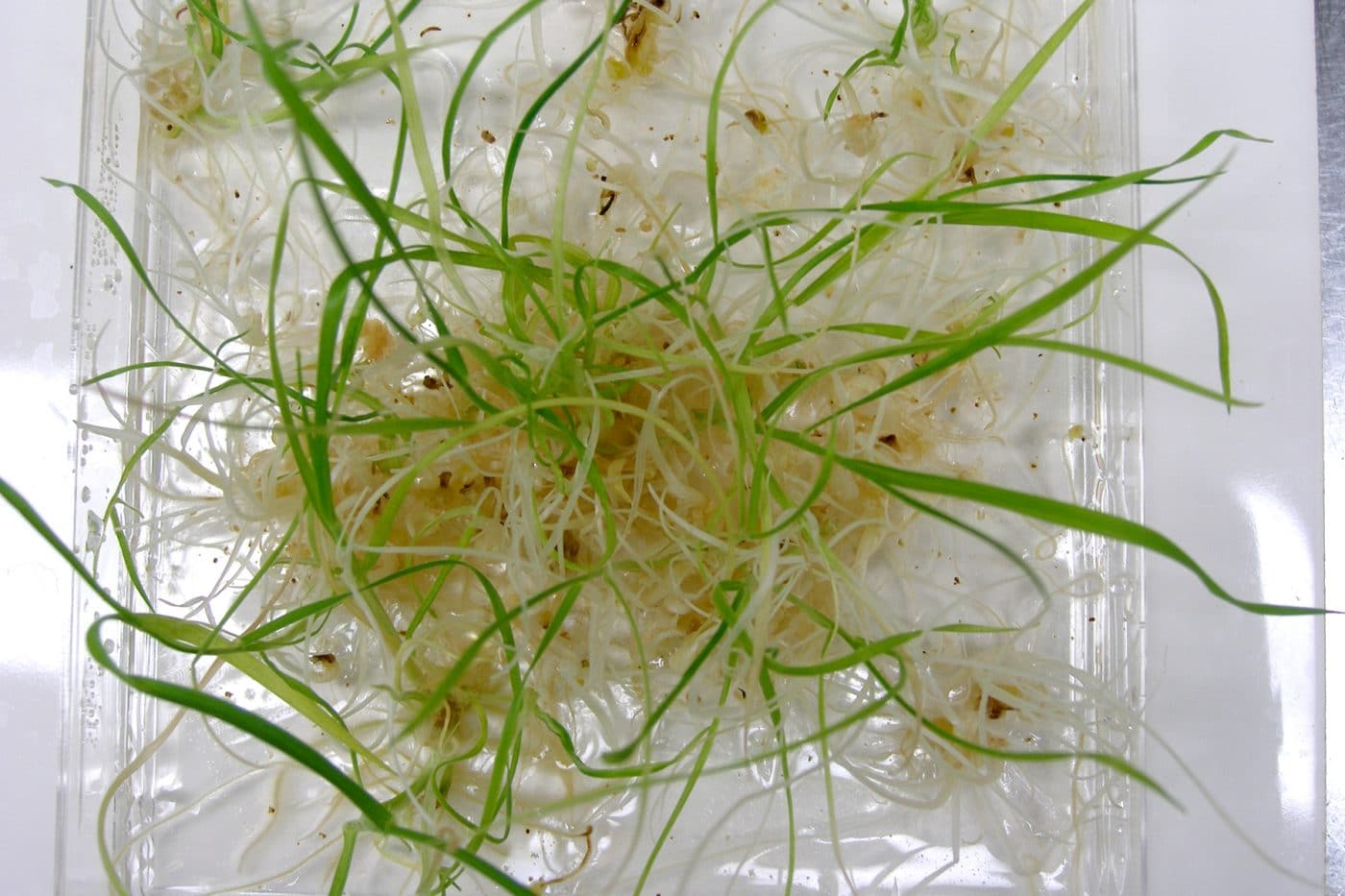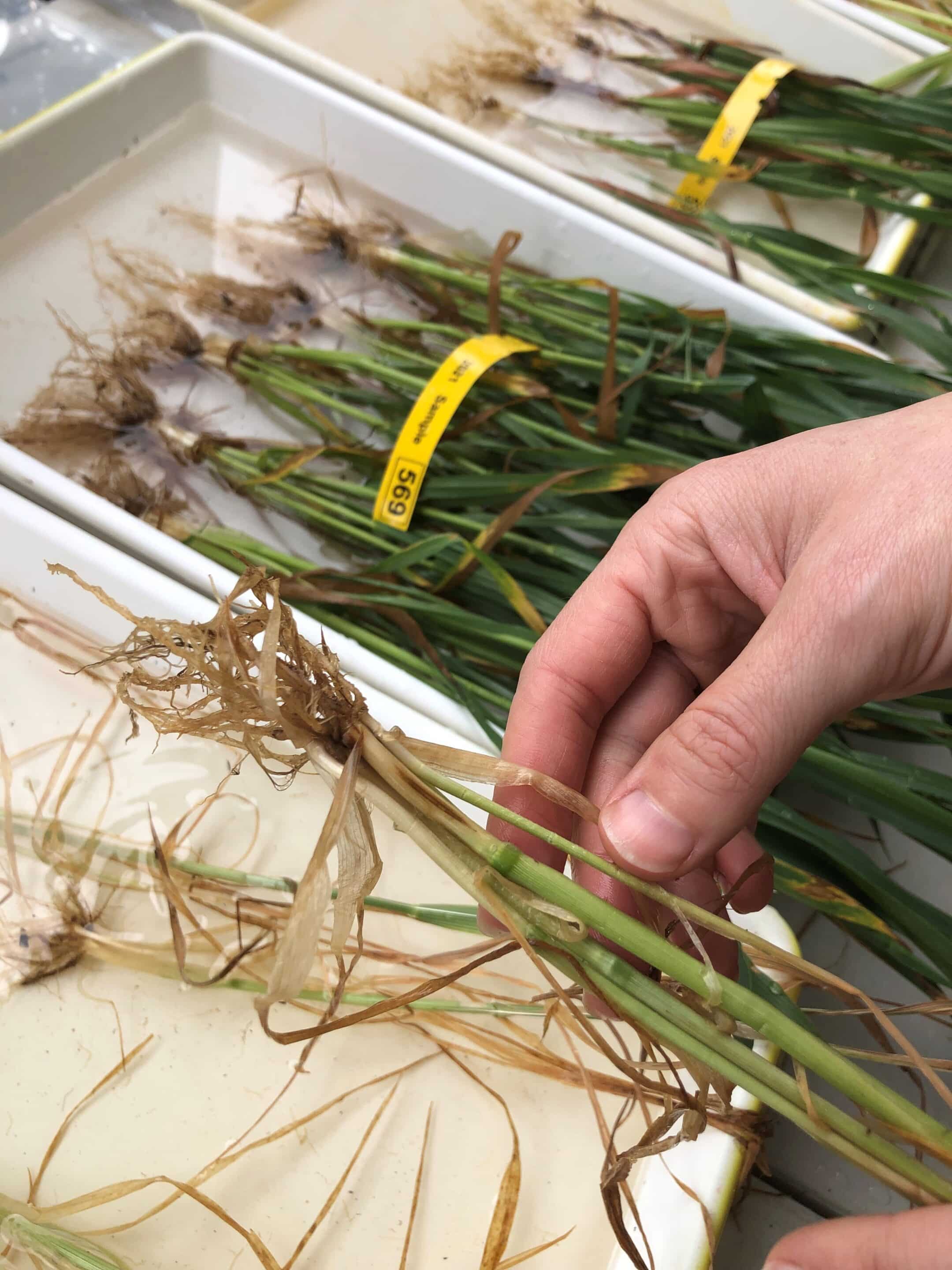START
FINISH

Summary
The project successfully regenerated wheat doubled haploids using technology similar to that used for commercial barley breeding. This is the first time such high levels of regeneration have been achieved using this method in Australia. The project also successfully regenerated oat doubled haploids at levels far greater than previously achieved.
Background
Doubled haploid technology creates efficiencies in plant breeding by bypassing the natural sexual reproductive process. Wheat doubled haploids have been used since the mid-1990s, primarily using a technique crossing wheat and maize. Doubled haploid technology allows cereal varieties to be released three to five years earlier than using conventional methods.
Since 1997, seven barley varieties and 11 wheat varieties have been released by Australian doubled haploid laboratories and breeding programs to deliver significant gains to the grain industry by the early adoption of significant yield-bearing traits.
However, these methods have been labour intensive and costly, resulting in a reduction in the number of doubled haploids used in wheat breeding. For oat breeding, doubled haploid technology is not yet efficient enough for commercial use.
Research Aims
This project aimed to develop techniques to deliver more efficient and commercially viable production of wheat and oat doubled haploids.
In The Field
During the course of the project, more than 4000 wheat spikes were cultured in experiments designed to achieve maximum growth and plant regeneration.
In addition, 4000 oat panicles were cultured in experiments designed to achieve maximum growth and plant regeneration.
Results
A method for doubled haploid production in wheat that produces plants at a similar frequency to the barley method has now been successfully developed and two breeding populations have been provided to breeding companies. For oats, the level of plant regeneration has been improved but is still only around 20% of the level for wheat and barley.
In wheat:
- The level of spontaneous chromosome doubling in wheat is 20%, which is much less than that of barley, which is around 70%. Therefore chemical doubling using colchicine is essential.
- The costs of wheat doubled haploid production using isolated microspore culture (IMC) were compared to the wheat x maize and the barley IMC method.
- The cost of a wheat doubled haploid plan produced using IMC is around 45% of the cost of a wheat doubled haploid produced by the wheat x maize method.
- The cost of a wheat doubled haploid produced using IMC is 15% higher than the cost of barley because of the additional chromosome doubling step required.
In oats:
- Barley ovaries significantly increased the proportion of oat microspores that will grow to form colonies.
- Consistent levels of plant regeneration are not possible without the addition of 1% activated charcoal.
- There is a high level (85%) of spontaneous doubling in regenerant plants.
Unfortunately, despite this project making significant improvements to wheat and oat doubled haploid technology, the benefits cannot be realised in the current economic climate. The economics of doubled haploid implementation are no longer favourable. However, two populations of IMC derived doubled haploids have been delivered to Longreach Plant Breeders and Australian Grain Technologies.
The methods developed in this project will be published in scientific journals so they can be implemented if the economic climate becomes favourable for their adoption in future.
Project Participants
SARDI: Dr Phil Davies, Dr Parminder Sidhu
The Problem
Doubled haploids (DH) plants can decrease the time to produce new varieties by three to five years, producing significant economic gains for the industry. Current methods are labour intensive and costly which has seen a decline in adoption of the technology.
The research
The aim was to develop more efficient and cheaper methods for doubled haploid production in wheat and oats using the isolated microspore culture (IMC) technique. For wheat, the aim was to develop a method as efficient as that used for barley. For oats, the aim was to develop a method efficient enough to develop doubled haploids for the National Oat Breeding Program.
More information
Dr Phil Davies, SARDI Senior Research Scientist
T: 08 8303 9494
E: [email protected]
Value for Growers
- Improvements in plant breeding technology can lead to producing disease resistant varieties that require fewer fungicide applications, more weed-competitive varieties that require less herbicide and varieties that require less fertiliser inputs due to efficient nutrient use.
- All of these outcomes can be accelerated through the use of doubled haploid technology.
- Successful methods now exist for the creation of wheat and barley doubled haploids for commercial plant breeding.
- Improvements have been made to the oat doubled haploid technology but further work would be required to make this commercially viable.
- Unfortunately, due to cost pressures, the technology is unlikely to be adopted widely in the current climate. However, it has now been developed and is available should plant breeders choose to adopt it.
Latest Research Projects



